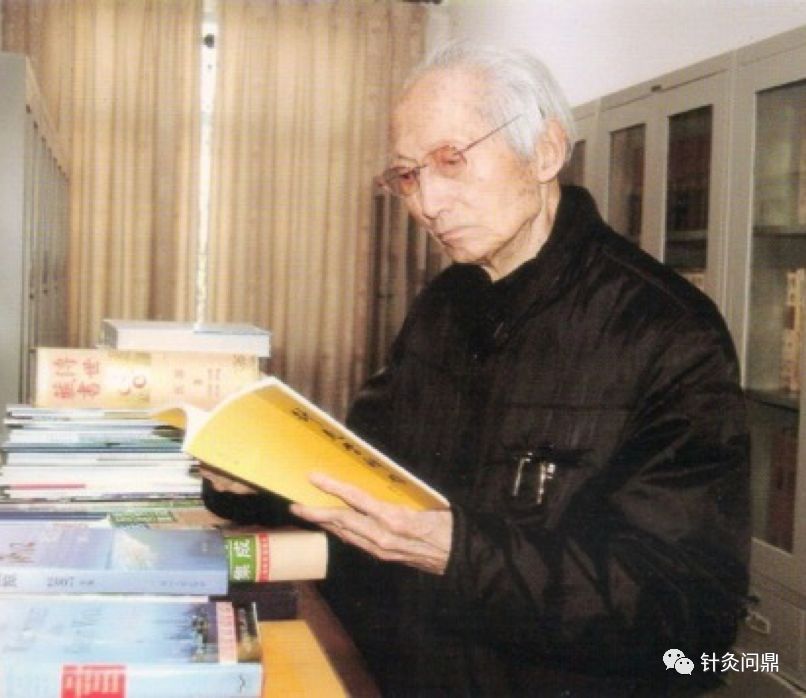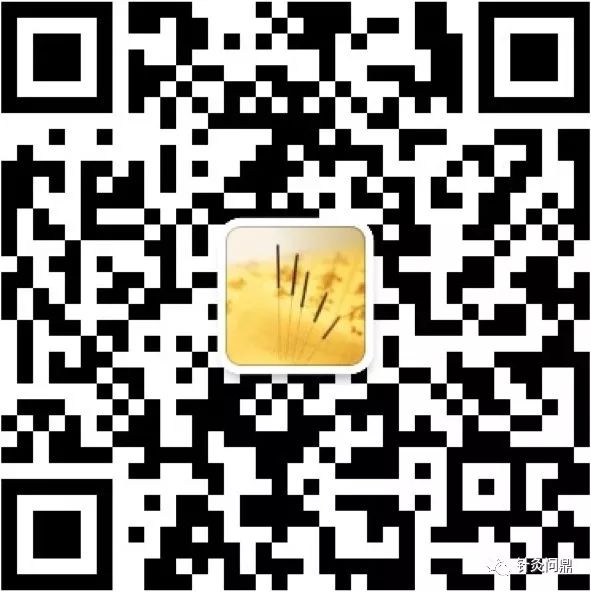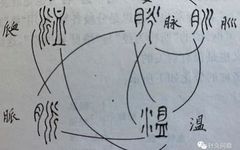Click above to read the classics of acupuncture
To learn acupuncture, we must understand the basic concepts of ‘pulse’ (脉), ‘meridians’ (经), and ‘collaterals’ (络). Many people know these concepts superficially but do not understand their deeper meanings. Therefore, Professor Li traces back to the origins and analyzes the relevant content from a philological perspective as follows:
 The Original Meaning of ‘Pulse’The character ‘脉’ (mài) originally refers to blood vessels. The “Shuōwén Jiězì” explains it as “blood vessels that distribute and flow through the body (邪,斜).” Blood vessels, meaning the appearance of blood vessels has patterns and textures, distributed horizontally and obliquely throughout the body (Duan Yucai notes that ‘理’ should be read as ‘分理’, forming a term ‘理分’, which does not align with the original meaning), resembling branches of flowing water.The right half of the character ‘脉’ is the same as ‘派’, which serves both as a phonetic and semantic component; the left half comes from ‘肉’ (the ‘月’ radical) or ‘血’ (the ‘衇’ radical), indicating that this is related to the circulation of blood and is part of the physical body.Later, the character ‘脉’ was standardized to be written with the ‘肉’ radical. The right half of the character ‘脉’ is a variant of the character ‘永’, which is now written as ‘脉’, and the meaning is also consistent.
The Original Meaning of ‘Pulse’The character ‘脉’ (mài) originally refers to blood vessels. The “Shuōwén Jiězì” explains it as “blood vessels that distribute and flow through the body (邪,斜).” Blood vessels, meaning the appearance of blood vessels has patterns and textures, distributed horizontally and obliquely throughout the body (Duan Yucai notes that ‘理’ should be read as ‘分理’, forming a term ‘理分’, which does not align with the original meaning), resembling branches of flowing water.The right half of the character ‘脉’ is the same as ‘派’, which serves both as a phonetic and semantic component; the left half comes from ‘肉’ (the ‘月’ radical) or ‘血’ (the ‘衇’ radical), indicating that this is related to the circulation of blood and is part of the physical body.Later, the character ‘脉’ was standardized to be written with the ‘肉’ radical. The right half of the character ‘脉’ is a variant of the character ‘永’, which is now written as ‘脉’, and the meaning is also consistent.

Shanghai University of Traditional Chinese Medicine Motto (Li Dingshu)‘脉’ and ‘温’
In the silk book “Eleven Pulses” unearthed from the Han tomb at Mawangdui in Changsha, the character ‘脉’ is often written as ‘温’. This character can be said to be a hybrid of the original ‘blood’ radical and ‘meat’ radical:‘水’ (the water radical) is a variation of the right half of the character ‘脉’, ‘目’ is a variation of the character ‘肉’, and ‘皿’ is a variation of the character ‘血’ (abbreviated).
It can be understood that the early character ‘脉’ referred to blood vessels, hence also called ‘blood vessels’. The “Sùwèn” states that ‘脉者血之府’, which carries the same meaning. From the character shape and phonetics, it can also be inferred that this character has a certain connection with the flow of water.

Professor Li’s Diagram of the Evolution of the Character ‘脉’Understanding the Concept: ‘Meridians’ and ‘Collaterals’
The “Neijing” distinguishes ‘脉’ into ‘meridians’ (经脉) and ‘collaterals’ (络脉). The “Língshū·Màidù” states: ‘Meridians are the interior, while those that branch and run horizontally are collaterals; the branches of collaterals are called ‘Sūn’.’This is a further differentiation of ‘脉’.‘经’ originally means a straight line (longitudinal thread), while ‘络’ refers to a network, used to define the different sizes of ‘脉’, which is quite clear in meaning.
The “Neijing” states that ‘the meridians are the pathways for blood and qi…’. Here, a definition is given to the meridians, adding content that was not present before.It expands from simply ‘conducting blood’ to ‘conducting blood and qi’.This concept’s emergence is closely related to the application of acupuncture, massage, qigong, and other methods. These methods of treating diseases and promoting health explore the phenomena of ‘blood and qi’ movement within the human body, greatly enriching the understanding of ‘脉’.
‘脉’ is divided into ‘经’ and ‘络’, and further classified by location into ‘Yin meridians’ (阴经), ‘Yang meridians’ (阳经), ‘Yin collaterals’ (阴络), ‘Yang collaterals’ (阳络), by size into ‘large meridians’ (大经), ‘large collaterals’ (大络), ‘small collaterals’ (小络), ‘Sūn collaterals’ (孙络), by the abundance or deficiency of blood and qi into ‘full meridians’ (盛经), ‘deficient meridians’ (虚经), ‘full collaterals’ (盛络), ‘deficient collaterals’ (虚络), as well as ‘blood collaterals’ (血络) when congested and ‘floating collaterals’ (浮络) when superficial.These names are discussed more concentratedly in the “Sùwèn·Tiáojīng Lùn”. The ‘经’ in the “Sùwèn·Tiáojīng Lùn” refers to various meridians primarily based on the meridians.
Documentary of Inheritor Professor Li Ding
(Recorded at Shanghai University of Traditional Chinese Medicine in 2018)
Understanding the Concept: Why are ‘Meridians’ the Main Branch of ‘脉’?
‘经’ and ‘络’ are both phono-semantic characters derived from the ‘糸’ radical. Characters with the ‘糸’ radical were originally used for textiles, and their application to ‘脉’ is based on analogy. The phonetic half of the character also carries semantic meaning. The half of the character ‘经’ is ‘坙’, which “Shuōwén Jiězì” explains as: ‘water veins, from 巛 (river) below; one, the earth. Ren is a phonetic abbreviation.’ This means it refers to underground water veins. It can be seen that using ‘经’ to refer to the main branch of ‘脉’ has etymological connections.
Understanding the Concept: Why is ‘络’ the Small Branch of ‘脉’?
The right half of the character ‘络’, ‘各’, serves both as a phonetic and semantic component. “Shuōwén Jiězì” states: ‘各, different words.’ This means divergent and different, hence ‘络’ is used to refer to the small branches of ‘脉’.
The “Língshū” states that ‘what is done is meridian’ and ‘collaterals are different from each other’, which is very enlightening for our understanding of the meanings of ‘经’ and ‘络’.
(This article is published with the authorization of Professor Li Ding, edited by: DHL)
‘Li Lun Ding Shuo’ Series Article Links
Huang Longxiang: Reading Professor Li Ding’s New Edition of ‘Difficulties in Acupuncture’
1. What is the difference in meaning between ‘blood and qi’ and ‘qi and blood’?
2. What are the twelve collateral meridians? What are their functions and clinical significance?
3. Correct Interpretation by Acupuncturists – What does ‘obtaining qi’ mean?
4. Correct Interpretation by Acupuncturists – What does ‘mingmen’ mean?
5. Correct Interpretation by Acupuncturists – What does ‘gaohuang’ mean?
6. Correct Interpretation by Acupuncturists – What does ‘yingzui’ mean?
7. The basis for the depth of acupuncture in clinical practice
8. The similarities and differences between ‘ju ci’ and ‘miao ci’
References
[1] Li Ding, Hu Ling, Wang Runsheng, Yan Liping, eds. Difficulties in Acupuncture (Revised Edition) [M]. Shanghai: Shanghai University of Traditional Chinese Medicine Press, 2006

Master of Traditional Chinese Medicine Qiu Peiran reading Professor Li Ding’s representative work ‘Difficulties in Acupuncture’
Long press to identify the QR code to read the original classics by Professor Li

Original work is not easy, please click below to see

